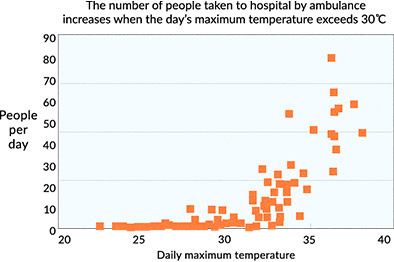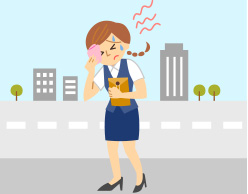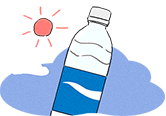When heat disorders are likely to occur
Heat disorders do not only occur on hot days when the sun is blazing. Look at the following graph to find out when you should be extra careful.
Be careful on hot days in midsummer and during the rainy season
When temperatures are high during midsummer

Epidemiology of heatstroke (II) heatstroke. Occupational medicine journal 39(4):24-30, 2016.
The number of people who develop heat disorders increases in August on days when the air temperature is highest. In addition, when the temperature remains high night after night, a person's body temperature remains high even at night, and this can result in heat disorders.
Emergency hospitalizations due to heatstroke start to occur on midsummer days (when the high is above 30 degrees) and increases rapidly on very hot days (above 35 degrees). (Morimoto, 2015)
Sudden high temperatures during a break in the rainy season, or at the end of the rainy season
In Japan, heat disorders also often occur on sunny days from the middle of June through July, and on hot, humid days at the beginning of the rainy season. At these times, the body has not yet become adjusted to the heat, and cannot sweat adequately, and is therefore not capable of effectively regulating body temperature. When it is hot for a number of days in a row, the body adjusts to the heat in a process called “heat acclimation.”

Caution is needed when the following conditions apply

- High temperature
- High humidity
- No wind
- Direct sunshine
- High temperatures brought on by reflected heat of the sun
- Near-by heat sources
- Heat waves
Source:
Ministry of the Environment, Environmental Health Department, Environmental Health and Safety Division. Heat Disorders Environmental Health Manual (March 2011 Revised Edition)
Case studies highlighting situations in which extra attention should be paid and action taken to prevent heat disorders, such as during sports activities and in the workplace.






